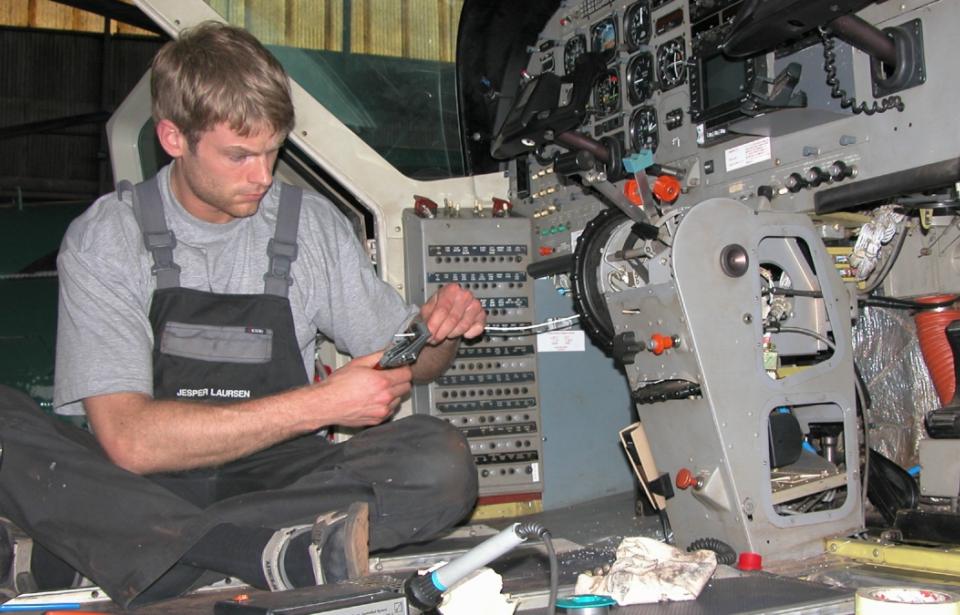Image

Air Operator’s Certificate
AOC
In order to ensure the highest level of safety for each of Aviation Sans Frontières’ flights undertaken on behalf of partner humanitarian structures (NGOs, international organisations, etc.), the NGO left no stones unturned to obtain an Air Operator’s Certificate (AOC), finally granted in 2012.
Issued by the French Civil Aviation Authority (DGAC), this certificate also meets the requirements of the European Union Aviation Safety Agency (EASA). Today, Aviation Sans Frontières is the only NGO worldwide to own a European AOC, hence allowing it to meet the same requirements as any airline company.
The organisation’s aircraft are serviced every 100 hours of flight time by a PART 145-approved maintenance organisation, itself held under the responsibility of the Continuing Airworthiness Management Organisation (Part M).
Pilots working for Aviation Sans Frontières are continuously trained and monitored so as to maintain the high level of qualification required from them. All of the NGO’s flight operations are permanently audited by the quality department as well as by the French Civil Aviation Authority (DGAC).
Flight safety is one of the main priorities of Aviation Sans Frontières France.

Published on 09/12/2014
Aviation Sans Frontières holds an Air Operator's Certificate. But what does that mean exactly? Prosper Benakouangolo, deputy to the Continuing Airworthiness Manager and Patrick Campanotto, Compliance Monitoring Manager decipher.
It was important for us to obtain this new CTA because without it, our planes would not have had the right to fly after October 28, 2014. In October 2013, the DSAC (Direction de la Sécurité de l'Aviation Civile) sent us a timeline with a number of questions we had to answer, tasks to complete and deadlines to meet. For example, one of the elements requested was the updating of all the company's documentation and in particular our operations manual called MANEX. It is a key element for our aircraft missions because it is on this document that the pilots base themselves to know what they must do. It is a very dense document, over 800 pages, so it was painstaking work for us.
The previous CTAs were renewed every year: each year the DGAC (General Directorate of Civil Aviation) asked us a certain number of questions in order to assess us and renew or not (which never happened) our certificate. From now on, it is a permanent and definitive CTA, subject to remaining in a controlled environment. We must comply with the regulations and procedures written in the MANEX and we are regularly checked to verify that we are complying with our obligations.
Finally, greater involvement is required of us: with the old CTA and the EU-OPS regulation, we wrote a procedure, we sent it to the DGAC, which checked it and authorized us to use it. From now on, with the AIR-OPS regulations, we write a procedure and it is up to us to check its compliance with the regulations. We are therefore fully responsible for what we write to EASA (European Aviation Safety Agency).
The AIR OPS regulations define the EASA requirements. We must comply with them by putting in place operating procedures that correspond to what the EASA and the French authorities require. The study and analysis of this very dense regulation is essential to check that everything we do is compliant. In addition, as EASA works in English, there is no longer an official translation of some of these texts, which adds an additional difficulty.
Patrick: As Head of Compliance Monitoring, I have to check that operational requirements are met. With regard to the maintenance of our aircraft, I must ensure, for example, that the premises or the qualifications of the personnel are in line with the tasks to be performed. I also have to check the tools and their calibration. When I find a discrepancy, I write an audit report and ask for this defect to be corrected. The maintenance workshop must then propose a corrective action plan and must prove to me that this has been implemented.
There were a number of accidents in the early 2000s that claimed the lives of several United Nations officials. Following this, the UN said that it would only work with air operators with a carrier certificate, a guarantee of quality and safety. Aviation Sans Frontières already met quality standards, but it needed to be able to prove it through official certification.
Prosper: I saw ASF before and after the CTA. This led us to show extreme rigor to obtain it and now to keep it. At first it was seen as a constraint for a humanitarian association but today we realize that it is beneficial: the DGAC treats us as a company in its own right, for our 3 small planes! Today we are the only association with a European CTA.
We now have the constraint of having workshops approved by the DGAC to maintain our aircraft. We have 2 approved workshops, one of which was created from scratch by Aviation Sans Frontières in Kinshasa and another at Entebbe airport (Uganda) on the premises of a local company that operates with the same aircraft as us. On the other hand, we have a follow-up of all the equipment of the aircraft, of each part, with their date of installation. You should know that some parts have a limited lifespan calculated in hours, in cycles or in calendar time. Apart from repairs, our aircraft are serviced every 100 flight hours. So we have to watch all of this closely.
Prosper: Our CTA is essential for us to help local populations: without our CTA we could no longer carry out the operations we are currently carrying out in Congo. Patrick: It was a challenge to get it. Now we must continue to work to preserve it.

Les Ailes de l'Avenir is about allowing young people to put their foot back in the stirrup for tomorrow